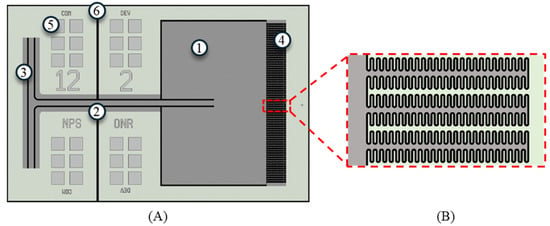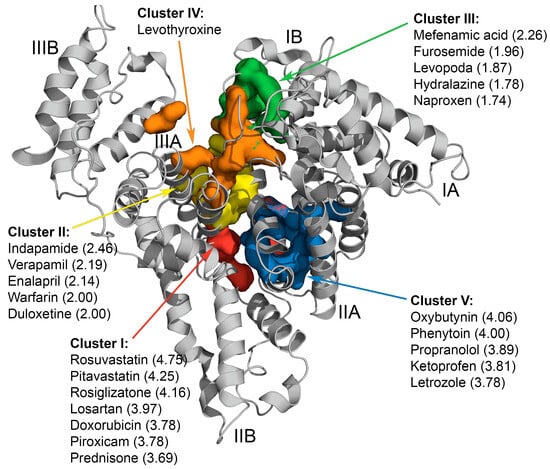Acacia melanoxylon is highly valued for its commercial applications, with the heartwood exhibiting a range of colors from dark to light among its various clones. The underlying mechanisms contributing to this color variation, however, have not been fully elucidated. In an effort to
[...] Read more.
Acacia melanoxylon is highly valued for its commercial applications, with the heartwood exhibiting a range of colors from dark to light among its various clones. The underlying mechanisms contributing to this color variation, however, have not been fully elucidated. In an effort to understand the factors that influence the development of dark heartwood, a comparative analysis was conducted on the microstructure, substance composition, differential gene expression, and metabolite profiles in the sapwood (SW), transition zone (TZ), and heartwood (HW) of two distinct clones, SR14 and SR25. A microscopic examination revealed that heartwood color variations are associated with an increased substance content within the ray parenchyma cells. A substance analysis indicated that the levels of starches, sugars, and lignin were more abundant in SP compared to HW, while the concentrations of phenols, flavonoids, and terpenoids were found to be higher in HW than in SP. Notably, the dark heartwood of the SR25 clone exhibited greater quantities of phenols and flavonoids compared to the SR14 clone, suggesting that these compounds are pivotal to the color distinction of the heartwood. An integrated analysis of transcriptome and metabolomics data uncovered a significant accumulation of sinapyl alcohol, sinapoyl aldehyde, hesperetin, 2′, 3, 4, 4′, 6′-peptahydroxychalcone 4′-O-glucoside, homoeriodictyol, and (2S)-liquiritigenin in the heartwood of SR25, which correlates with the up-regulated expression of
CCRs (
evm.
TU.
Chr3.
1751,
evm.
TU.
Chr4.
654_667,
evm.
TU.
Chr4.
675,
evm.
TU.
Chr4.
699, and
evm.
TU.
Chr4.
704),
COMTs (
evm.
TU.
Chr13.
3082,
evm.
TU.
Chr13.
3086, and
evm.
TU.
Chr7.
1411),
CADs (
evm.
TU.
Chr10.
2175,
evm.
TU.
Chr1.
3453, and
evm.
TU.
Chr8.
1600), and
HCTs (
evm.
TU.
Chr4.
1122,
evm.
TU.
Chr4.
1123,
evm.
TU.
Chr8.
1758, and
evm.
TU.
Chr9.
2960) in the TZ of
A.
melanoxylon. Furthermore, a marked differential expression of transcription factors (TFs), including
MYBs,
AP2/ERFs,
bHLHs,
bZIPs,
C2H2s, and
WRKYs, were observed to be closely linked to the phenols and flavonoids metabolites, highlighting the potential role of multiple TFs in regulating the biosynthesis of these metabolites and, consequently, influencing the color variation in the heartwood. This study facilitates molecular breeding for the accumulation of metabolites influencing the heartwood color in
A.
melanoxylon, and offers new insights into the molecular mechanisms underlying heartwood formation in woody plants.
Full article
 IJMS
IMPACT
IJMS
IMPACT Applied Sciences
IMPACT
Applied Sciences
IMPACT Sustainability
IMPACT
Sustainability
IMPACT Sensors
IMPACT
Sensors
IMPACT JCM
IMPACT
JCM
IMPACT Materials
IMPACT
Materials
IMPACT Molecules
IMPACT
Molecules
IMPACT Energies
IMPACT
Energies
IMPACT Electronics
IMPACT
Electronics
IMPACT Remote Sensing
IMPACT
Remote Sensing
IMPACT Cancers
IMPACT
Cancers
IMPACT Nutrients
IMPACT
Nutrients
IMPACT Mathematics
IMPACT
Mathematics
IMPACT Foods
IMPACT
Foods
IMPACT Buildings
IMPACT
Buildings
IMPACT Polymers
IMPACT
Polymers
IMPACT Animals
IMPACT
Animals
IMPACT Water
IMPACT
Water
IMPACT Plants
IMPACT
Plants
IMPACT Agronomy
IMPACT
Agronomy
IMPACT Biomedicines
IMPACT
Biomedicines
IMPACT Processes
IMPACT
Processes
IMPACT Microorganisms
IMPACT
Microorganisms
IMPACT Diagnostics
IMPACT
Diagnostics
IMPACT Nanomaterials
IMPACT
Nanomaterials
IMPACT Viruses
IMPACT
Viruses
IMPACT Medicina
IMPACT
Medicina
IMPACT Healthcare
IMPACT
Healthcare
IMPACT Cells
IMPACT
Cells
IMPACT Forests
IMPACT
Forests
IMPACT Agriculture
IMPACT
Agriculture
IMPACT Land
IMPACT
Land
IMPACT JMSE
IMPACT
JMSE
IMPACT IJERPH
IJERPH
 Symmetry
IMPACT
Symmetry
IMPACT Genes
IMPACT
Genes
IMPACT Pharmaceutics
IMPACT
Pharmaceutics
IMPACT Coatings
IMPACT
Coatings
IMPACT Micromachines
IMPACT
Micromachines
IMPACT Pharmaceuticals
IMPACT
Pharmaceuticals
IMPACT Atmosphere
IMPACT
Atmosphere
IMPACT Children
IMPACT
Children
IMPACT Religions
IMPACT
Religions
IMPACT Antioxidants
IMPACT
Antioxidants
IMPACT Life
IMPACT
Life
IMPACT Metals
IMPACT
Metals
IMPACT Biomolecules
IMPACT
Biomolecules
IMPACT Vaccines
IMPACT
Vaccines
IMPACT Education Sciences
IMPACT
Education Sciences
IMPACT Minerals
IMPACT
Minerals
IMPACT Horticulturae
IMPACT
Horticulturae
IMPACT Brain Sciences
IMPACT
Brain Sciences
IMPACT JPM
IMPACT
JPM
IMPACT Bioengineering
IMPACT
Bioengineering
IMPACT














